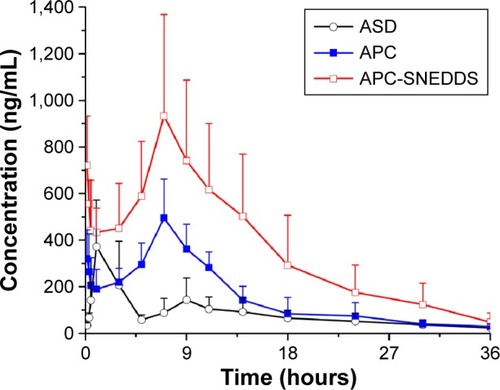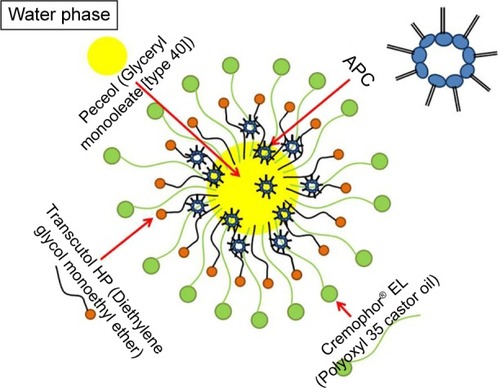Figures & data
Table 1 Experimental arrangement of formulations
Table 2 Visual assessment of efficiency of self-emulsification
Figure 2 Infrared spectra.
Notes: (A) ASD. (B) Phospholipids. (C) Physical mixture of ASD and phospholipids. (D) APC.
Abbreviations: ASD, Akebia saponin D; APC, Akebia saponin D–phospholipid complex.
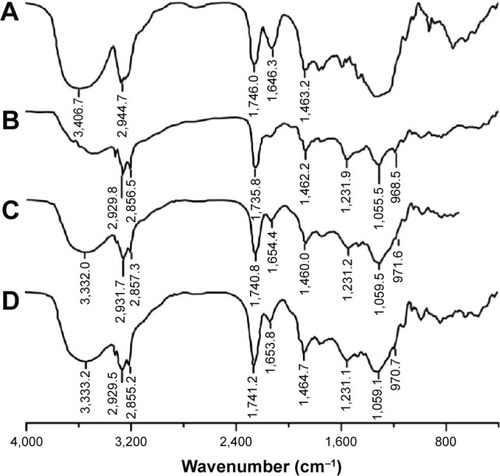
Figure 3 DSC thermograms.
Notes: (A) ASD. (B) Phospholipids. (C) Physical mixture of ASD and phospholipids. (D) APC.
Abbreviations: DSC, differential scanning calorimetry; ASD, Akebia saponin D; APC, Akebia saponin D–phospholipid complex; Exo, exothermic.
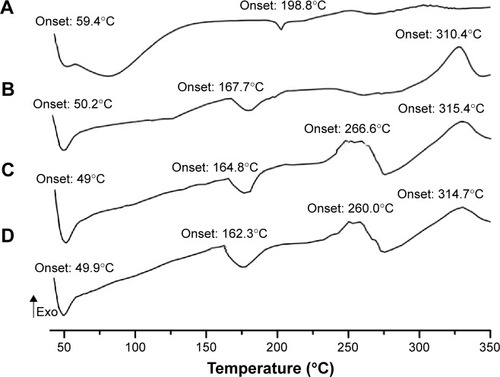
Figure 4 Scanning electron micrographs.
Notes: (A) ASD (×500 magnification). (B) APC (×500 magnification).
Abbreviations: ASD, Akebia saponin D; APC, Akebia saponin D–phospholipid complex.
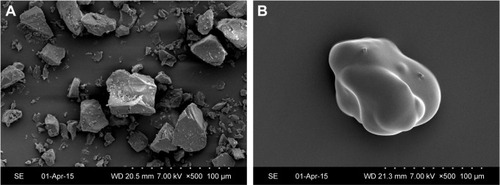
Table 3 Solubility of ASD, physical mixture, and APC in water and n-octanol (n=3)
Figure 5 Solubility of APC in various carriers.
Notes: (A) Oils. (B) Surfactant and cosurfactant (n=3). PEG 400, Diethylene glycol monoethyl ether, and 1,2-propanediol were tested for surfactant. Polyoxyl 40 hydrogenated castor oil and Polyoxyl 35 castor oil were tested for cosurfactant.
Abbreviations: APC, Akebia saponin D–phospholipid complex; PEG 400, polyethylene glycol 400.

Table 4 Droplet size, polydispersity index, and zeta potential of SNEDDS formulations with different drug loading after dilution with distilled water at a ratio of 1:100
Figure 6 Pseudoternary phase diagram of the SNEDDS formulation composed of Glyceryl monooleate (type 40), Polyoxyl 35 castor oil, Diethylene glycol monoethyl ether, and APC with a drug loading of 4%.
Abbreviations: SNEDDS, self-nanoemulsifying drug delivery system; APC, Akebia saponin D–phospholipid complex.
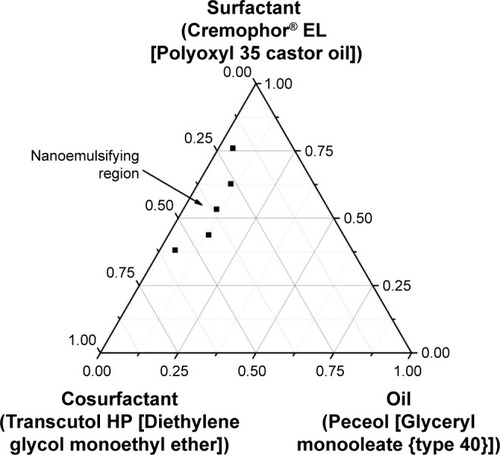
Figure 7 Transmission electron microscope image of APC-SNEDDS formulation (×12,000 magnification).
Note: The SNEDDS was composed of Peceol (Glyceryl monooleate [type 40]), Cremophor® EL (Polyoxyl 35 castor oil), Transcutol HP (Diethylene glycol monoethyl ether), and APC with a drug loading of 4%.
Abbreviations: APC, Akebia saponin D–phospholipid complex; SNEDDS, self-nanoemulsifying drug delivery system.
![Figure 7 Transmission electron microscope image of APC-SNEDDS formulation (×12,000 magnification).Note: The SNEDDS was composed of Peceol (Glyceryl monooleate [type 40]), Cremophor® EL (Polyoxyl 35 castor oil), Transcutol HP (Diethylene glycol monoethyl ether), and APC with a drug loading of 4%.Abbreviations: APC, Akebia saponin D–phospholipid complex; SNEDDS, self-nanoemulsifying drug delivery system.](/cms/asset/12b29d57-9957-4a63-94cd-0c712be77c69/dijn_a_12193387_f0007_c.jpg)
Table 5 Effects of aqueous phase pH, dilution factor, and heating–cooling cycles on droplet size of APC-SNEDDS (mean ± SD, n=3)
Table 6 Bioavailability and pharmacokinetic parameters of ASD after oral administration of ASD, APC, and APC-SNEDDS (mean ± SD, n=6)
Figure 8 Plasma concentration–time profiles of ASD after oral administration of ASD, APC, and APC-SNEDDS formulation at a dose of 90 mg/kg (mean ± SD, n=6).
Abbreviations: ASD, Akebia saponin D; APC, Akebia saponin D–phospholipid complex; SNEDDS, self-nanoemulsifying drug delivery system; SD, standard deviation.
